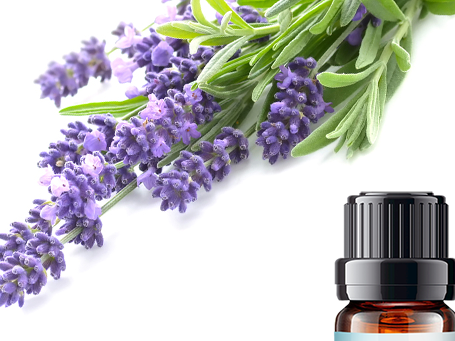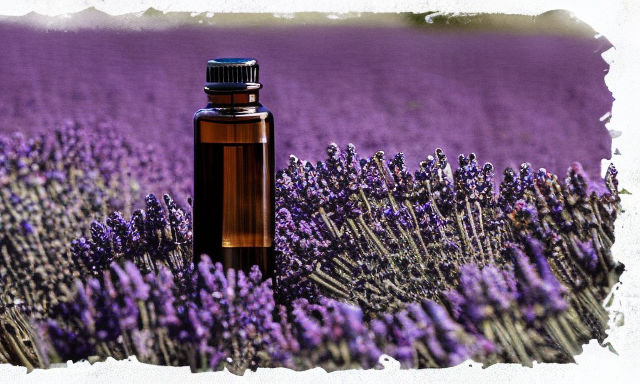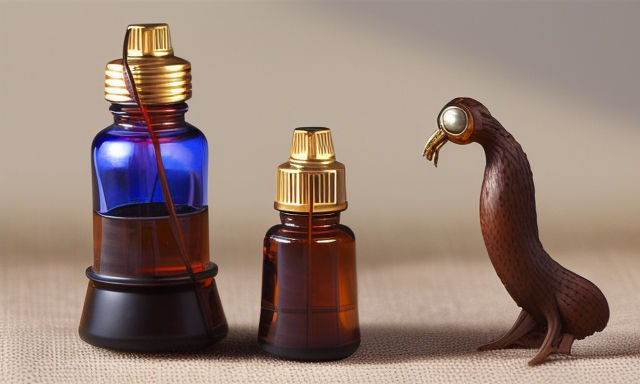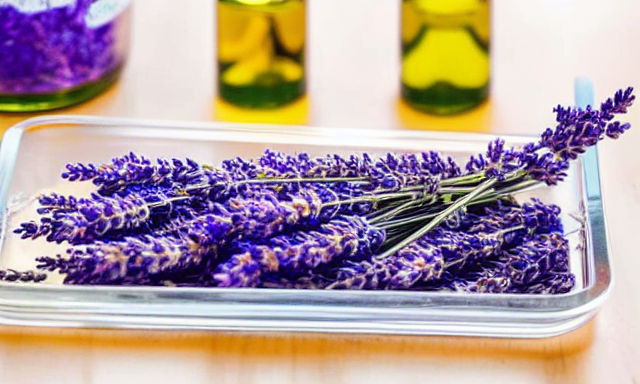Uses For Lavender Essential Oil
Lavender is an essential oil known for its soothing properties. Its properties include antiseptic, antifungal, and anti-inflammatory properties. Lavender also has a soothing effect on raw nerves. In fact, lavender is a key ingredient in the anti-anxiety drug Silexan. The drug is clinically proven to reduce symptoms of anxiety and tension within two weeks.

Anti-inflammatory properties
Lavender essential oil has anti-inflammatory properties. The essential oil is extracted from a lavender plant in Hungary. It was collected at the beginning and end of its flowering phase. The oil was then tested on an in vitro model using a human monocyte/macrophage cell line. It was found that the oil inhibited IL-1b, IL-8, and TNFa production. It also decreased mRNA expression, a marker of pro-inflammatory cytokine production.
Lavender has anti-inflammatory properties that make it ideal for reducing inflammation in the skin. It can be used as a topical cream or lotion. You can also apply it to rashes and insect bites. Lavender essential oil is a natural sedative, so it can help you get a restful night’s sleep.
Lavender essential oil has antioxidant properties. This oil inhibits the production of free radicals. The antioxidant activity of lavender essential oil was determined by using a stable radical called DPPH. It showed high antioxidant activity, with concentration-dependent effects.
Antiseptic properties
Lavender essential oil is known to have antiseptic properties, removing impurities from the body and helping regenerate skin cells. It is beneficial for treating various skin ailments such as acne and wrinkles, and has been proven to help treat hair loss and alopecia. It can also be used as a deodorant and in air diffusers. In addition, lavender has antimicrobial properties and can help to get rid of odors.
Lavender essential oil is rich in antimicrobial activity, and is highly effective against a number of bacterial and fungal strains. Its MIC values are comparable to those of tea tree oil against Proteus vulgaris, Escherichia coli, VRE, and Shigella sonnei.
The antibacterial properties of lavender essential oil have been known for centuries. During World War I, it was widely used for treating wounds and preventing infections. In the present, however, there is limited research evaluating its therapeutic properties. However, lavender has gained increasing popularity as an additive in over-the-counter cosmetic products and complementary medicine. It is a popular choice among people who would like to pamper their skin and feel refreshed.
Antimicrobial properties of lavender essential oil are often attributed to its soothing, relaxing effects. In addition, it has antimicrobial properties, which may be helpful for gum infections. Combined with tea tree oil, it is an excellent antiseptic and may also reduce flu symptoms. However, lavender oil is not the only essential oil with antimicrobial effects. The combination of cinnamon, wild carrot, and rosemary essential oil is also effective for treating sore throats. It has strong antibacterial properties and is highly effective against bacteria that are resistant to antibiotics.
Anti-fungal properties
Lavender essential oil has powerful anti-fungal properties. It has been shown to destroy a variety of Candida species and dermatophytes. It was isolated using hydrodistillation, and scientists tested it against various types of fungi. This oil is especially effective against mucocutaneous candidosis and skin-pathogenic strains of Candida.
It has been shown that the chemical composition of lavender essential oil is a key factor in its anti-fungal activity. It is made up of two main components: linalool and linalyl acetate. These two components were analyzed against fifty clinical isolates of Candida albicans and were found to inhibit growth of the fungi. They also inhibited the formation of the germ tube.
Anti-fungal activity was also found in the essential oils of thyme and clove. Both essential oils contain carvacrol and thymol, which can help fight off fungal growths. Also, tea tree oil and rosemary oil have been found to be effective against fungi.
The anti-fungal effects of lavender essential oil can be seen in both external and internal applications. In the case of external application, lavender essential oil is commonly combined with a carrier oil (such as jojoba or sweet almond). It can be applied in a massage oil, applied to the skin, or used in a bath. As essential oils are not regulated by the FDA and have no purity standards, it is important to find a supplier who distills their own material or who deals with reputable distillers. These suppliers should also use gas chromatography and mass spectrometry to guarantee purity.
Relieves itchiness
Lavender essential oil is a natural antihistamine that can relieve itchiness. It is derived from the plant Lavandula angustifolia. You can also mix it with other oils to treat other ailments. You can use it as a bath oil, too. However, you should remember that lavender essential oil is not regulated by the FDA and its purity is not guaranteed. That is why it is important to find a reputable supplier and look for their material. Look for a supplier that distills its own material or works with reputable distillers and uses gas chromatography and mass spectrometry to ensure the purity of their essential oils.
Lavender essential oil is effective against many skin ailments, including bacterial and fungal infections. It also helps in cases of allergic rashes and hives. Its anti-inflammatory properties make it a great remedy for hay fever and eczema. This oil is also effective in reducing wrinkles and easing skin discomfort.
Lavender essential oil is an excellent choice for itchy skin because it is a natural antihistamine that can quickly calm and soothe irritated skin. It also has antibacterial and antimicrobial properties and has been used for thousands of years. Ancient Europeans used lavender as a bathing oil because they believed it cleansed and detoxified the skin. You can also use lavender oil in your bathwater to soothe itchy skin and rashes.
Relieves sore muscles
Lavender essential oil is highly prized for its calming and anti-inflammatory properties. It is also a powerful analgesic and works well on strained muscles. Peppermint oil has anti-inflammatory and antispasmodic properties, and can help soothe muscle pain. Other essential oils that can help relieve muscle pain include rosemary, Spanish sage, and vetiver.
Essential oils can be applied topically, but should be diluted in carrier oils first. Some carrier oils are coconut, jojoba, olive, and argan oils. A 3% dilution is recommended for adults. This equals about 20 drops of essential oil per 1 oz. You can also use a 5% dilution for use on sore muscles.
Lavender is one of the most widely researched essential oils, with research suggesting its use in pain relief. It is also considered an excellent anti-inflammatory and has anti-microbial properties. It also helps relax muscles and eases stress. It has a calming effect, and is one of the most versatile essential oils.
Essential oils are highly concentrated extracts of plants. The resulting oils have a variety of healing properties. A single ounce of essential lavender oil can be used to treat a variety of muscle aches and pains. However, it is important to remember that these oils are very concentrated, so you should dilute them with a carrier oil. You can also combine multiple essential oils if you prefer.
Soothes irritated skin
If you suffer from dry and irritated skin, lavender essential oil is an excellent choice for soothing the symptoms. It is best used in combination with other essential oils. You can add six to twelve drops to a body or face lotion. It also works well as an aromatherapy oil. However, before using lavender oil to treat your skin, be sure to conduct a skin test to ensure that you are not allergic.
It has anti-inflammatory and anti-fungal properties that soothe irritated skin. It can reduce the appearance of age spots, reduce redness, and repair acne scars. It is also a great facial toner. The oil can also be applied directly to pimples to help relieve them.
If you are sensitive to lavender, you can use diluted lavender oil in your skin care products. It contains geraniol and linalool, which can cause contact allergies in sensitive individuals. Luckily, the reactions are mild and can be minimized. However, if you are sensitive to lavender, you should always consult a dermatologist for advice.
Lavender essential oil has anti-inflammatory properties and can calm irritated skin quickly. It is also an effective antibacterial and antihistamine. It has been used for thousands of years to treat various skin problems. Ancient Europeans believed that lavender purified the skin and eased itchiness. You can add it to your bath water or mix it with carrier oil to make a soothing blend.
Reduces dandruff
Lavender essential oil has a subtle scent that helps treat dandruff. You can find dandruff shampoos that contain lavender essential oil and use them regularly. This way, you can avoid irritating your scalp and making your condition worse. Lavender essential oil is also found in perfumes and cosmetics.
Lavender essential oil is often combined with other ingredients to fight dandruff. Adding a few drops of lavender oil to two tablespoons of carrier oil and massaging it into the scalp can help to alleviate dandruff. The antiseptic and anti-inflammatory properties of the oil make it a powerful natural remedy.
Tea tree oil is another essential oil that can help treat dandruff. This oil is a potent anti-fungal and antibacterial, which can help fight foreign invaders from the scalp. Functional practitioner Mariza Snyder, author of The Essential Oils Hormone Solution, recommends tea tree oil for dandruff.
Lavender essential oil contains numerous compounds that have healing properties. It can help prevent dandruff and relieve itching. The essential oil also has analgesic properties. It soothes the skin and helps to improve sleep.



